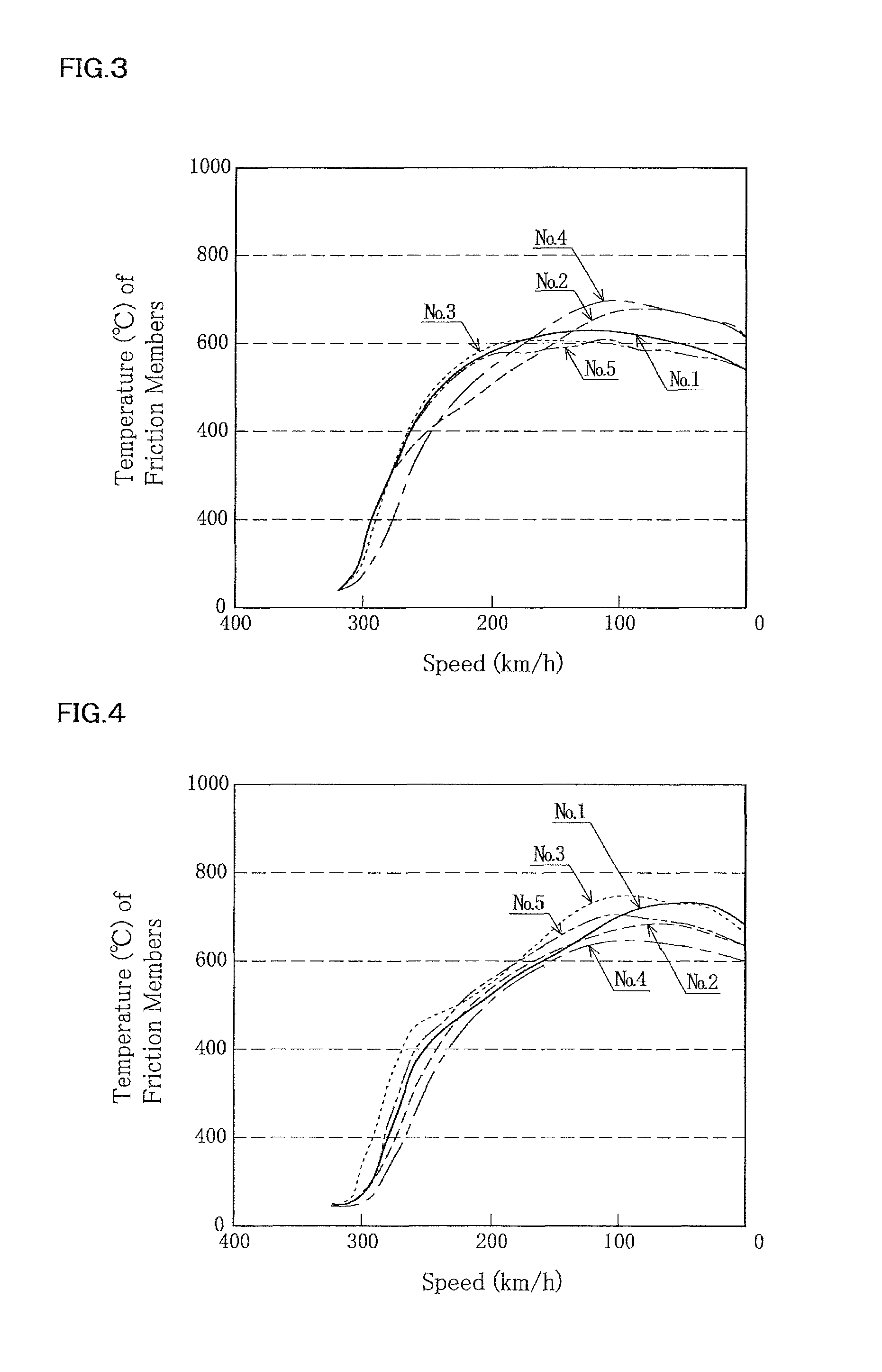Brake lining for railroad car
a technology for railroad cars and brakes, which is applied in the direction of friction linings, mechanical devices, transportation and packaging, etc., can solve the problems of increasing the temperature of the contact surface, local rise in temperature, and the inability of the elastic member to effectively achieve the inherent uniform surface pressure function, so as to prevent deformation and deterioration of the elastic member, uniform surface pressure, and uniform surface pressure
- Summary
- Abstract
- Description
- Claims
- Application Information
AI Technical Summary
Benefits of technology
Problems solved by technology
Method used
Image
Examples
examples
[0031]The preferred embodiment of the present invention is described below, along with the process from conceptualizing the present invention to solving the problem of the prior art.
[0032]The present inventors considered the fact that when a heavy pressing force is applied, the temperature of a friction member rises, causing a yield of the elastic member disposed between the friction member and the back plate, and the present inventors realized that it would be effective to limit the use of the elastic member when a heavy pressing force is applied, in order to maintain the uniform surface pressure function of the elastic member over a long period of time.
[0033]The present inventors also determined that when a heavy pressing force is applied, a sufficient uniform surface pressure can be achieved by means of an elasticity of the friction member itself and by means of an elasticity of the lining device as a whole, even if the function of the elastic member is not employed.
[0034]The bra...
PUM
 Login to View More
Login to View More Abstract
Description
Claims
Application Information
 Login to View More
Login to View More - R&D
- Intellectual Property
- Life Sciences
- Materials
- Tech Scout
- Unparalleled Data Quality
- Higher Quality Content
- 60% Fewer Hallucinations
Browse by: Latest US Patents, China's latest patents, Technical Efficacy Thesaurus, Application Domain, Technology Topic, Popular Technical Reports.
© 2025 PatSnap. All rights reserved.Legal|Privacy policy|Modern Slavery Act Transparency Statement|Sitemap|About US| Contact US: help@patsnap.com



